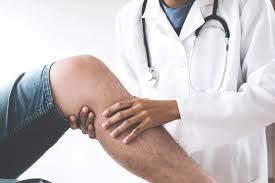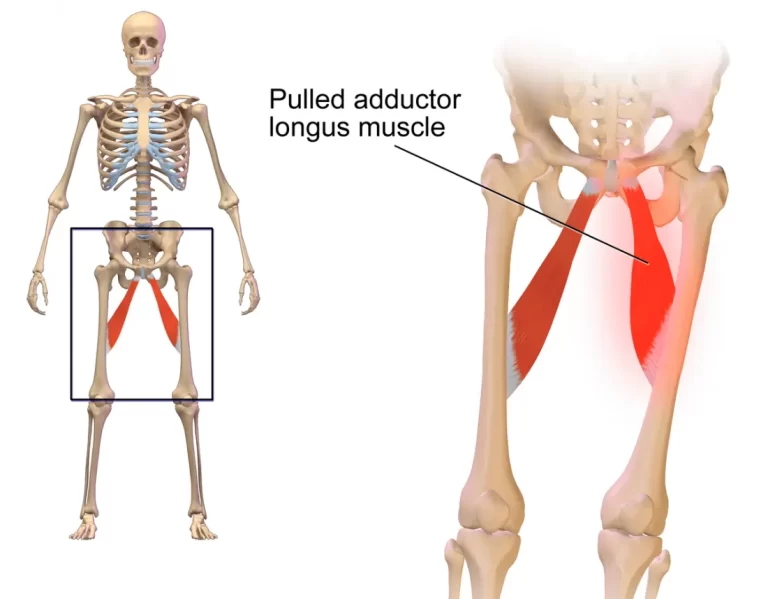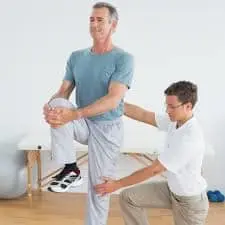What is The Fastest Way To Heal a Heel Spur?
What Is a Heel Spur?
It’s crucial to understand what a heel spur is before delving into the quickest method of healing one. It frequently reacts to repeated strain or stress on the muscles and ligaments of the foot. Even though not all heel spurs hurt, when they do, it can be challenging to stand or walk.
What Causes Heel Spurs?
You can find the best remedies for heel spurs by being aware of their causes. Typical reasons include:
- Repetitive Strain.
- Improper Footwear: The heel may become stressed if you wear shoes that don’t provide enough support.
- Obesity: Carrying more weight puts more strain on your feet.
- Gait Abnormalities: The way you walk might have an impact on how much weight is distributed between your feet.
How Can a Heel Spur Be Healed the Quickest?
A variety of techniques to lessen heel pressure, pain, and inflammation are needed to determine the quickest strategy to repair a heel spur.
Stretching Exercises for Heel Spurs:
Stretching daily might aid in pain relief and healing. Stretching relieves strain on the heel spur by releasing the Achilles tendon and plantar fascia.
- Calf Stretch: Stretch your calves by leaning forward slightly while standing facing a wall and placing one foot behind the other.
- Towel Stretch.
- Plantar Fascia Stretch.
Use Orthotic Inserts and Supportive Shoes:
In order to determine the quickest method for healing a heel spur, proper foot support is crucial. Supportive footwear and orthotic inserts can lessen heel strain and help distribute pressure properly throughout your foot.
Tips for Choosing Orthotics:
- Custom orthotics: These offer the best support and are made specifically for your foot.
Heel Cushions: Gel or foam heel cushions offer additional comfort and shock absorption.
Consistently wearing orthotics can significantly reduce pain and stop the heel spur from getting worse.
Anti-Inflammatory Treatments:
The healing process can be accelerated by reducing inflammation.
- Nonsteroidal Anti-Inflammatory Drugs (NSAIDs): Ibuprofen (Advil) and naproxen (Aleve) are examples of over-the-counter drugs that can help lower pain and inflammation.
- Ice Therapy.
- Topical Creams: When administered directly to the heel, anti-inflammatory creams or gels might offer regional relief.
When taking anti-inflammatory medications, always heed your doctor’s recommendations, particularly if you have any underlying medical concerns.
Rest and Activity Modification:
A vital component of any healing process is rest. When thinking about the quickest way to treat a heel spur, you can avoid more harm by limiting activities that put stress on your feet.
- Limit High-Impact Activities: Steer clear of prolonged standing, jogging, and jumping.
Try Low-Impact Exercises: To stay active without putting too much strain on your feet, try swimming, cycling, or water aerobics. - Elevate Your Feet: To lessen swelling, raise your feet while you’re at rest.
Physical Therapy:
Therapy could involve:
- Manual therapy.
- Ultrasound Therapy.
- Strengthening Exercises: Strengthening exercises are designed to increase the strength of the lower leg and foot muscles that support the heel.
Shockwave Therapy:
A non-invasive procedure called extracorporeal shockwave therapy (ESWT) employs sound waves to promote healing in the injured area.
- Non-surgical option
- Minimal downtime
- promotes the body’s natural healing mechanisms.
Cryoultrasound:
To reduce pain, cryoultrasound therapy combines the use of cold therapy and electromagnetic energy. The device, which is moved over the foot and ankle, resembles a big wand. For those with plantar fasciitis and heel spurs, research has shown that cryoultrasound therapy is an effective treatment choice. This therapy is frequently offered by physical therapists and podiatrists.
Corticosteroid injections:
To minimize pain at the injection location, your doctor will typically administer a numbing medication before performing the injection. The majority of physicians will inject the drug on the middle or inner part of the heel rather than the very bottom, though the exact location may differ.
Many patients with bone spurs find that corticosteroid injections assist, but there is a limit to how many or how frequently you may get them.
Cold compress:
Inflamed heel tissue can be relieved with cold therapy. Many pharmacies sell these as cold foot wraps or gel packs. After being stored in the freezer, they are wrapped around the ankle and foot. After removing the wrapper in ten-minute intervals, proceed.
Conclusion:
When it comes to the quickest approach to repair a heel spur, a mix of rest, anti-inflammatory medications, orthotics, and stretching can be helpful. By using these techniques, you can lessen pain, encourage recovery, and resume your regular activities.
For heel spurs and other foot issues, our knowledgeable staff provides individualized care and cutting-edge therapies.
FAQs
How can someone with a heel spur sleep?
Your heel spurs may also be relieved by wearing a night splint. The toes of most individuals point outward when they sleep, which might put more strain on your feet.
Does a heel spur respond well to hot water?
One way to reduce heel spur irritation is to soak feet in a small tub of warm water with Epsom salts that have been added.
Is massaging a heel spur beneficial?
As it kneads away and relaxes any stiff muscles, ligaments, and surrounding tendons, massage relieves pain. Additionally, it enhances blood flow to the area and lessens inflammation, both of which aid in the healing process.
Can heel spurs be treated with physical therapy?
In order to address the underlying cause of your heel pain and help you reach a full recovery, our physiotherapists will create a customized treatment plan.
Which workouts should you stay away from if you have heel spurs?
Avoiding high-impact exercises like sprinting, jumping, and plyometrics that place undue strain on the plantar fascia and heel is essential while dealing with heel spur pain. Instead, concentrate on low-impact activities like as walking on softer surfaces, swimming, or cycling, and include calf and plantar fascia stretches.
Which footwear is suitable for heel spurs?
When your feet contact the floor, shoes with high shock-absorbing qualities can lessen the force on your heels. The plantar fascia, which is frequently connected to heel spurs, can be less stretched and strained with the aid of a strong, non-flexible sole. It is advised to use shoes composed of flexible and breathable materials.
Can I wear a heel spur when I walk?
Even if you try to walk gently, you will experience pain whenever your heel touches the floor if you don’t treat a heel spur. The heel pain is sporadic at first, but it may eventually become persistent.
How may heel spurs be treated permanently?
Even though a heel spur is a bony protrusion that usually cannot be removed surgically, the pain it causes can frequently be controlled and eliminated using a variety of therapies. Pain relief and improved function are the main objectives of treatment, and conservative measures like physical therapy, orthotics, stretching, and rest are typically used to accomplish this. When conservative measures fail, surgery is often saved for cases where the spur cannot be removed.
What would happen if you continued to walk on a heel spur?
Pain from heel spurs is usually mild at first, but it usually gets worse over time. This is because exercises like jogging and walking put extra strain on your foot’s soft tissues, which causes irritation and inflammation to worsen with time.
Do bone spurs continue to grow?
Although bone spurs can continue to grow, their rate and size will vary based on their location and underlying causes. In other cases, if treatment is not received, they may eventually stop developing naturally and even start to regress.
Which vitamins aid in the dissolution of bone spurs?
Although it is impossible to dissolve bone spurs bony protrusion on bones naturally or with vitamins, several nutrients and vitamins can help control their symptoms and possibly stop them from growing further by promoting bone health and lowering inflammation. In addition to calcium and magnesium, vitamins D, K, and C are important for bone health and can help treat bone spurs.
How are heel spurs removed by doctors?
In order to remove the fascia section, your doctor will make two tiny incisions on either side of the heel and introduce an endoscope and a tiny surgical hook through them. Endoscopic heel spur excision involves making a tiny incision and removing tiny fragments of the bone spur.
Does walking help heel spurs?
Depending on the person and the severity of the condition, walking can be beneficial or detrimental for heel spurs. Walking can help some people feel less pain because it increases blood flow and stretches the plantar fascia. For some, though, walking too much can make their pain and inflammation worse.
How may heel spurs be permanently resolved?
Surgery is the only method to remove a heel spur, although there are therapies that can lessen the pain of these underlying diseases.
References:
- Crna, R. N. M. (2018b, August 29). 7 Heel spur treatments and home remedies. Healthline. https://www.healthline.com/health/heel-spur-treatment
- Digital, C. (2024, December 20). Fastest way to heal a heel spur —. Prime Foot and Ankle Specialists Voorhees, WOODBURY HEIGHTS, Pine Hill, Turnerville. https://www.footandanklecentersofsj.com/blog/fastest-way-to-heal-a-heel-spur
- The best ways to get rid of your heel spur: Town Center Foot & ankle: Podiatry. (n.d.). https://www.tcfootandankle.com/blog/the-best-ways-to-get-rid-of-your-heel-spur
- Heel Spurs. (2025b, June 2). Cleveland Clinic. https://my.clevelandclinic.org/health/diseases/21965-heel-spurs







